The Cervidae family is a large family that includes 16 genera and about 47 different species of deer. However, due to habitat destruction and illegal hunting by humans, many wild deer species are endangered, and some have even become extinct in the wild. So, which species of wild deer is the rarest? What endangered deer species are there? In this article, we will take stock of the 10 rarest species of deer in the world, including Eld's deer, Chilean red deer, dolphin deer, Vietnamese muntjak, northern Pudu deer, etc. Let's learn about them together.

1. Eld’s deer (national first-level protected animal)
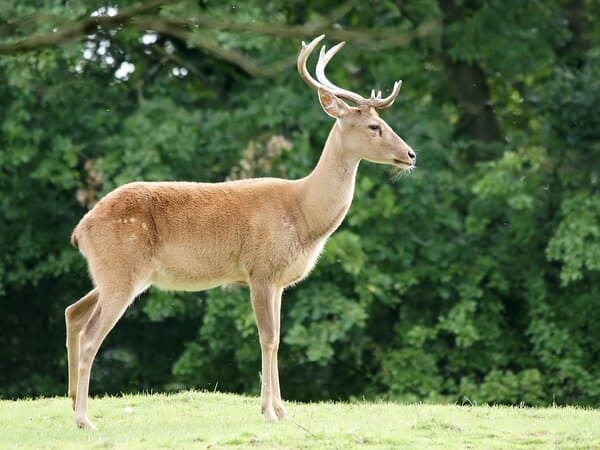
Eld's deer is a medium-sized deer, similar in appearance to sika deer, but smaller in size, less spotted, with a slender neck, trunk and limbs, making it very flexible. The general body length is about 160 cm, the shoulder height is 104-110 cm, and the weight is between 70-130 kg. Eld's deer is mainly distributed in Southeast Asia and China's Hainan Island. It is one of the most precious deer species. It is included in the "China National Key Protected Wild Animals List" Level 1, and the "World Conservation Union" 2008 Red List of Endangered Species ver. 3.1 Medium – Listed as Endangered (EN).
2. Chilean elk (endangered)
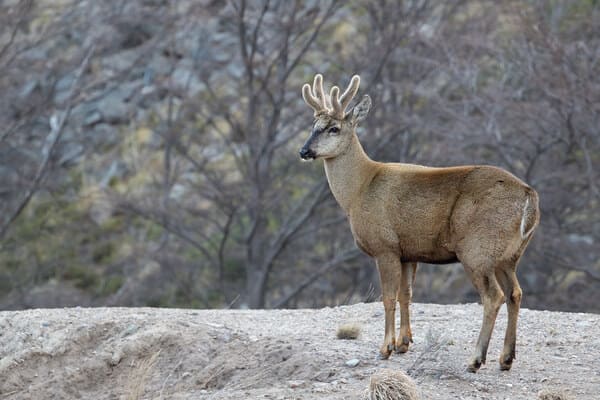
The Chilean horse moose is one of two species in the genus Horse Moose of the family Cervidae. The length of the male is about 140-175 cm, while the length of the female is about 140-157 cm. The height at the shoulder is between 80-90 cm. The weight is Generally between 40-100kg. Due to habitat destruction and frequent hunting, the Chilean horse moose has been on the verge of extinction since 1976. They are currently only scattered in southern Argentina and Chile. By 2008, there were less than 2,000 surviving in the world, so they were included in the 2008 Red List of Endangered Species - Endangered (EN) by the International Union for Conservation of Nature.
3. Dolphin deer (endangered)
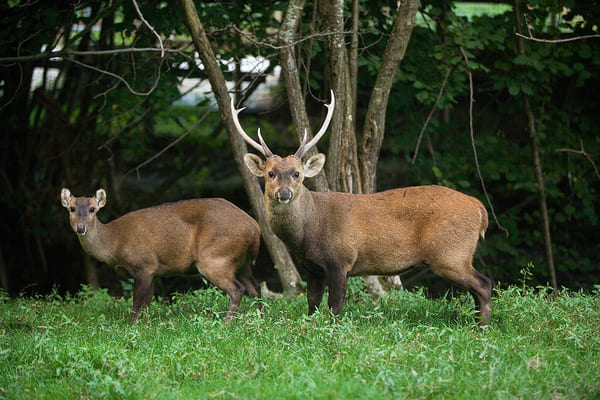
Dolphin deer, also known as sage deer or pig deer, is medium-sized, but relatively stout, with short limbs, looks squat, blunt and low buttocks, and looks like a pig, hence its name. Due to habitat destruction, wild dolphin deer are very rare and are mainly distributed in Bangladesh, Bhutan, Cambodia, India, Nepal and Pakistan. They mostly survive in Dudhwa National Park and Jaldapara Wildlife Sanctuary in South Asia. . Due to its rarity, it is listed as Endangered (EN) on the 2012 IUCN Red List of Threatened Species.
4. Vietnamese giant muntjac (endangered)

The Vietnamese giant muntjac, also known as the giant muntjac, is the largest deer muntjac species in the world. It was discovered in 1994 in Ha Tinh Province, Vietnam and central Laos. They weigh about 30-50 kilograms and are animals with brown-red skin and hooves. The Vietnamese giant muntjac is mainly distributed in Cambodia, Laos and Vietnam. Due to the continued expansion of local agriculture and over-hunting, the number of wild giant muntjacs has declined sharply, and it was therefore included in the 2008 Red List of Threatened Species - Endangered (EN) by the International Union for Conservation of Nature.
5. Northern Pudu deer (endangered)
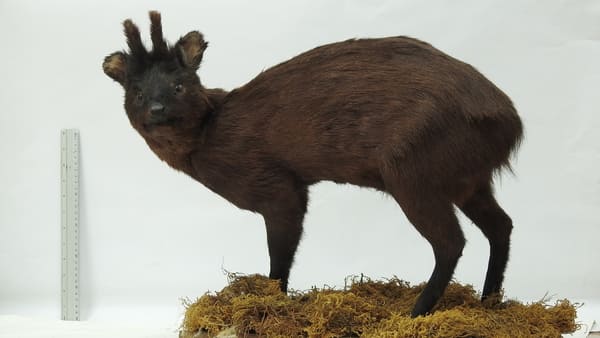
The northern Pudu deer is a member of the Pudu family. Their bodies are relatively small, their limbs are slender, and their fur is dark brown in color. Their hair is thick and provides protection, making them less likely to be injured when traveling through the jungle. The body length is about 60-80 cm, the shoulder height is up to 35 cm, the tail is about 2-3 cm long, and the weight is between 8-10 kg. Northern Pudu deer are mainly found in some areas of the Andes, including Colombia, Ecuador, and Peru. They are a very rare deer species and are therefore included in the 2018 Red List of Threatened Species - Endangered (EN) by the International Union for Conservation of Nature.
6. White-lipped deer (national first-level protected animal)
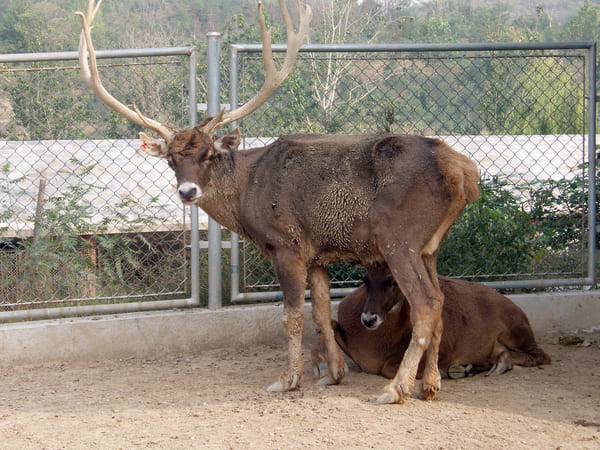
The white-lipped deer is a large and rare specialty deer species in China. Its body shape is similar to that of a red deer, but slightly smaller. The general body length is between 100-210 cm, the shoulder height is about 120-130 cm, the tail is the shortest among large deer, only 10-15 cm, and the weight is about 130-200 kg. The white-lipped deer is a national first-level protected animal and is mainly distributed in Gansu, Qinghai, northwest Yunnan, Sichuan, Tibet and other regions. There are only one pair of this precious species abroad that were gifted to Sri Lanka by China in the early 1970s, and a pair that were gifted to Nepal in the early 1980s.
7. Elk (national first-level protected animal)
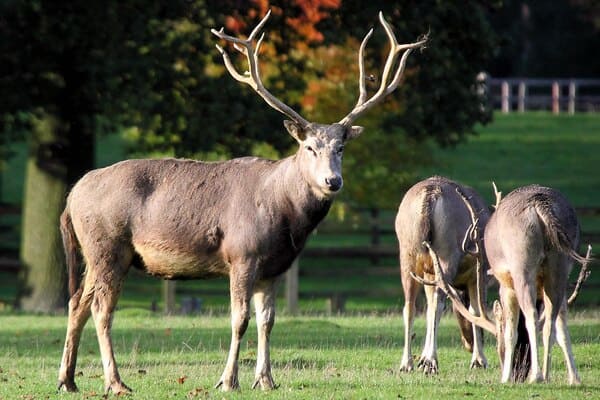
Elk are unique species in the Cervidae family, the only species of deer in the genus Elk, and one of the rarest deer in the world. It has a long and narrow head, similar to a horse, and has deer antlers, which is slightly different from other deer. Its hooves are as wide as a cow, and its tail is slender like a donkey, so it is named "Four Unlike". Elk are native to the swamp areas of the middle and lower reaches of the Yangtze River in China and are endemic to China. Once extinct in China, it was later reintroduced through the UK and successfully bred. Today, elk have successfully recovered from the brink of extinction and have become a model for saving a highly endangered species.
8. Black muntjac (national first-level protected animal)
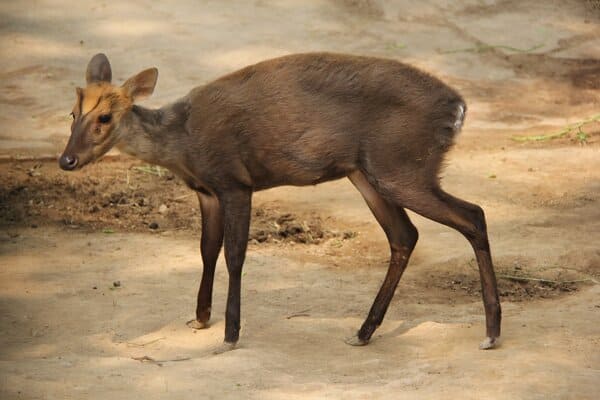
The black muntjac is a very rare species in the deer family. It is the largest species in the genus Cervidae, with a body length of about 100-110 cm, a shoulder height of about 60 cm, and a weight between 21-26 kg. As a specialty animal in China, black muntjac has no subspecies differentiation and its distribution range is very narrow. It is mainly distributed in southern Anhui, western Zhejiang, Huaiyuan in eastern Jiangxi, and Wuyishan in northern Fujian. Currently, the black muntjac is listed as a first-level protected wild animal in China, and is also listed as vulnerable by the World Conservation Union.
9. Prairie deer (endangered)
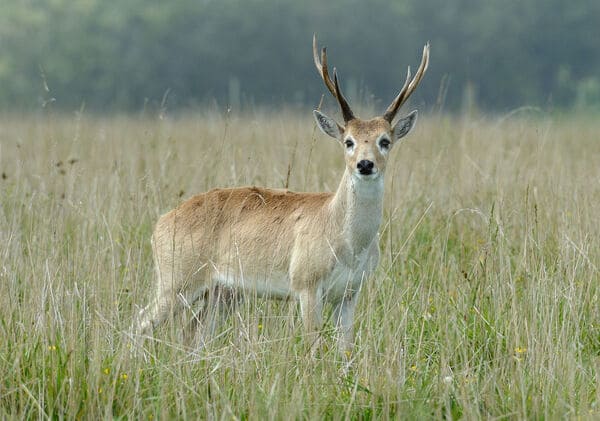
The South American steppe deer, also known as the steppe deer or Pampas deer, is an endangered deer species unique to South America and is mainly distributed in the Pampas region of Argentina. It has a slender body shape and long limbs. Male prairie deer have well-developed scent glands on their hind legs, and the smell they emit can spread up to 1.5 kilometers away. With the development of the Pampas area, most of the Pampas deer's habitat has been occupied by cattle, making them facing survival challenges.
10. Sika deer (national first-level protected animal)

Sika deer is a deer species unique to eastern Asia, mainly distributed in eastern Russia, Japan and China. Its body length is usually between 125 and 145 centimeters, its tail length is about 12 and 13 centimeters, and its weight is between 70 and 100 kilograms. In summer, the coat color is maroon with many white spots on the body, which looks like plum blossoms; in winter, the coat color is smoky brown, with less obvious white spots, and a mane grows on the neck. Due to long-term over-hunting in China, the number of sika deer in the wild is extremely rare, and their distribution range has also shown a trend of fragmentation. Therefore, sika deer is listed as a national first-level protected wild animal.

The list of the top ten rare deer species in the world is mainly based on a comprehensive summary of the endangered levels of various deer wild populations, relevant lists on the Internet and other information, and is for entertainment reference only. All relevant data is as of January 16, 2024.
Solemnly declare: Hunting, killing, eating, trading wild animals and their products are all illegal and criminal acts! Wild animals belong to nature. For the sake of the ecological environment and your health, please refuse to buy, raise, or eat wild animals!
We created this article in conjunction with AI technology, then made sure it was fact-checked and edited by a Animals Top editor.